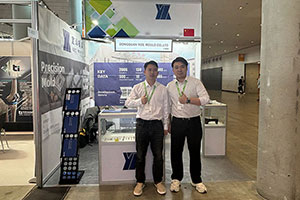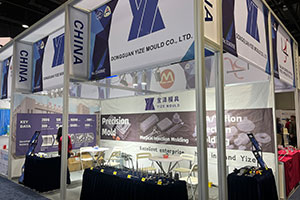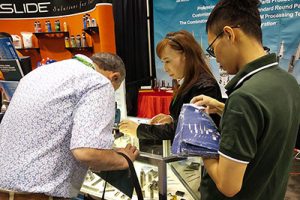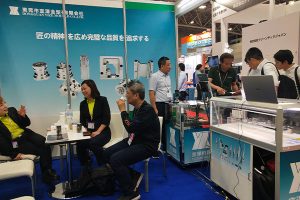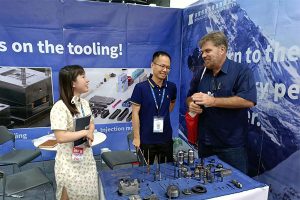Detailed Explanation of Polishing Methods for Tungsten Carbide Parts
Tungsten carbide, as a metal material with high hardness and strength, plays a crucial role in various industrial fields, particularly in the manufacturing of high-precision parts. However, due to its […]
Tungsten carbide, as a metal material with high hardness and strength, plays a crucial role in various industrial fields, particularly in the manufacturing of high-precision parts. However, due to its inherent high hardness, polishing tungsten carbide parts has become a challenging technical task. This article aims to provide an in-depth analysis of polishing methods for tungsten carbide parts, covering traditional polishing techniques as well as specific polishing methods for irregularly shaped tungsten carbide parts.
I. Traditional Polishing Methods for Tungsten Carbide Parts
Diamond Grinding Head Polishing
Our factory business: carbide parts, mold parts, medical injection molds, precision injection molds, teflon PFA injection molding, PFA tube fittings. email: [email protected],whatsapp:+8613302615729.
Diamond grinding head polishing is a method that utilizes the high hardness of diamonds to perform fine grinding on the surface of tungsten carbide. The diamond grinding head can polish the surface of tungsten carbide to an extremely smooth finish, achieving the brightest polishing effect. However, given the high cost of diamond grinding heads, they must be used with caution to avoid waste or excessive wear. During the polishing process, operators should master the use techniques of the grinding head to ensure the polishing effect while prolonging the service life of the grinding head as much as possible.
Sandpaper Sanding
Sandpaper sanding is a simple and effective method for polishing tungsten carbide parts. By gently rubbing the surface of tungsten carbide with fine sandpaper, uneven surfaces can be smoothed out. During the sanding process, it is important to ensure that the sandpaper grains are fine enough to avoid scratching the surface of tungsten carbide. At the same time, operators should apply appropriate pressure and speed to prevent oversanding, which could degrade the surface quality.
Special Polishing Liquid Polishing
Using a special polishing liquid is also an effective method for polishing tungsten carbide parts. These polishing liquids are usually chemical solutions that can dissolve microscopic protrusions on the surface of tungsten carbide, making it smoother. When using polishing liquid, it must be diluted in the correct proportion and carefully applied to the surface of tungsten carbide. The use of polishing liquid requires certain skills and experience, and operators should master its application method to achieve the best polishing effect.
II. Polishing Methods for Irregularly Shaped Tungsten Carbide Parts
Abrasive Flow Polishing
Abrasive flow polishing is a method suitable for polishing irregularly shaped tungsten carbide parts. This method uses high-speed flowing abrasives to impact and grind the surface of the part, achieving a polishing effect. Abrasive flow polishing has the advantages of good polishing uniformity and simple operation, making it particularly suitable for complex-shaped irregular tungsten carbide parts. During the polishing process, the type and concentration of abrasives can be selected according to the shape and polishing requirements of the part to achieve the best polishing effect.
Electrolytic Deburring and Polishing
Electrolytic deburring and polishing is a processing method that uses electrolysis to remove burrs from metal parts and is also applicable to the polishing of irregularly shaped tungsten carbide parts. This method uses an electrolyte to dissolve burrs on the surface of the part, making it smoother. Electrolytic deburring and polishing has the advantages of high processing efficiency and good polishing effect, particularly suitable for removing burrs from hidden intersections or complex-shaped parts in irregularly shaped tungsten carbide parts. During the electrolytic deburring and polishing process, the concentration and temperature of the electrolyte must be controlled to avoid excessive corrosion of the part.
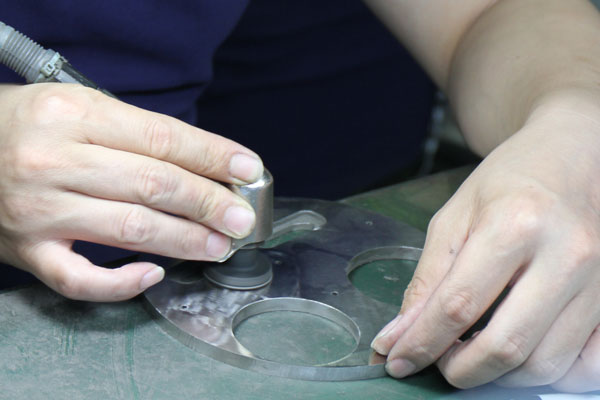
III. Precautions During the Polishing Process
Safe Operation
Safe operation is the primary consideration during the polishing process. Operators should strictly follow safety operating procedures and wear protective gear to avoid accidents. At the same time, polishing equipment should be regularly inspected and maintained to ensure its normal operation and safety.
Surface Treatment
Before polishing, the surface of tungsten carbide parts needs to be treated. First, impurities such as oil stains and rust should be removed from the surface to ensure the polishing effect. Secondly, for parts with uneven surfaces, leveling treatment is required to achieve a certain degree of surface finish.
Selection of Polishing Parameters
The selection of polishing parameters has a significant impact on the polishing effect. During the polishing process, appropriate polishing tools, polishing liquids, and polishing parameters should be selected based on factors such as the shape, material, and surface requirements of the part. At the same time, the polishing effect should be regularly checked and adjusted to ensure that it meets the requirements.
Cleaning and Drying After Polishing
After polishing, the parts need to be cleaned and dried. During cleaning, special cleaning agents or polishing agents should be used to remove residual substances and polishing liquids. For drying, drying equipment or natural air-drying methods should be used to ensure that the surface of the part is dry and free of moisture.
IV. Conclusion
Polishing tungsten carbide parts is a challenging technical task, but by selecting appropriate polishing methods and parameters and paying attention to the precautions during the polishing process, satisfactory polishing effects can be achieved. For irregularly shaped tungsten carbide parts, abrasive flow polishing and electrolytic deburring and polishing are two effective methods. With the continuous development and innovation of polishing technology, it is believed that more efficient and environmentally friendly polishing methods will be applied to the polishing of tungsten carbide parts in the future.
Professional Tungsten Carbide Processing Manufacturer – Dongguan Yize Mould
Dongguan Yize Mould, as a professional tungsten carbide processing manufacturer, provides high-quality products such as tungsten carbide mold parts, tungsten carbide processing, and cemented carbide parts. Welcome to inquire by phone at +86 13302615729 (WeChat and WhatsApp available for the same number) for more detailed information.


